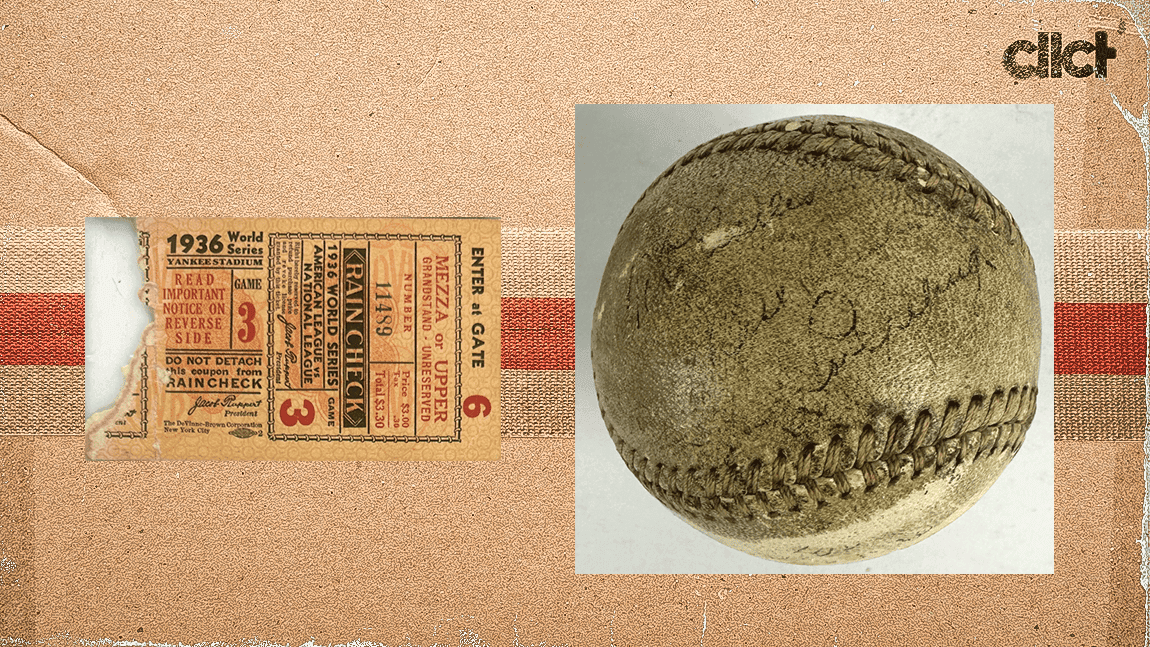During Game 3 of the 1936 World Series, Lou Gehrig hit a home run to right-center field in the second inning to give the Yankees a 1-0 lead. The Bombers would go on to win the game, as well as the series, but it would be that homer that became the most indelible memory from the World Series for brothers Steve and Charles Fruciano.
Sitting in section 27/28, Steve was able to catch Gehrig’s home run ball, which he brought to the Yankees locker room after the game for Gehrig to sign. For decades, the ball sat tucked away in a cabinet, until the family looked into donating the ball to the Baseball Hall of Fame. In the process, they had an idea: Why not have Cal Ripken, the man who broke the “Iron Horse’s” record for most consecutive games played, sign the ball next to Gehrig?
The idea was scrapped, ultimately a wise choice in retrospect considering the premium applied to single-signed balls (let alone home run balls).
In a letter of provenance, Rosemary Turco, Charles’ granddaughter and the inheritor of the ball, wrote that after the brothers' deaths, the ball was handed down to her in 1971.
The ball sold this weekend at Iconic Auctions for $81,856.50.
Authentic home run balls from the era are exceptionally rare. The ball Babe Ruth hit to notch the first home run in All-Star Game history in 1933 sold for $805,000 in 2006.
A Gehrig home run ball from the 1930 season, signed by Gehrig, Ruth and others, sold for $18,600 earlier this year. One of the few Gehrig home run balls to ever sell at auction, from the 1928 World Series, previously sold for $62,617 in 2012.
Will Stern is a reporter and editor for cllct.

